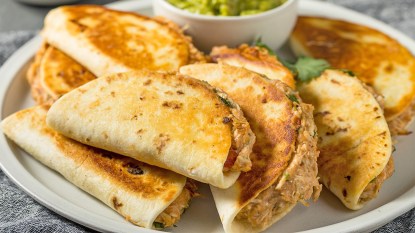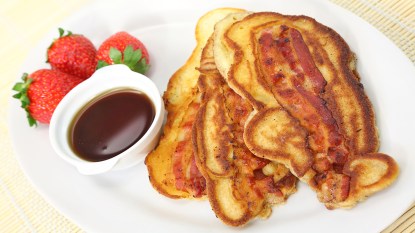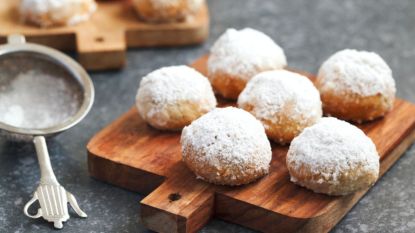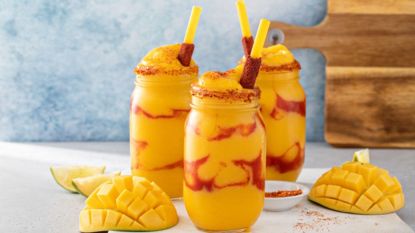Does the Perfect Pasta Shape Exist? According to One Man, It Does — And He Invented It
Even though pasta is already perfect on its own.
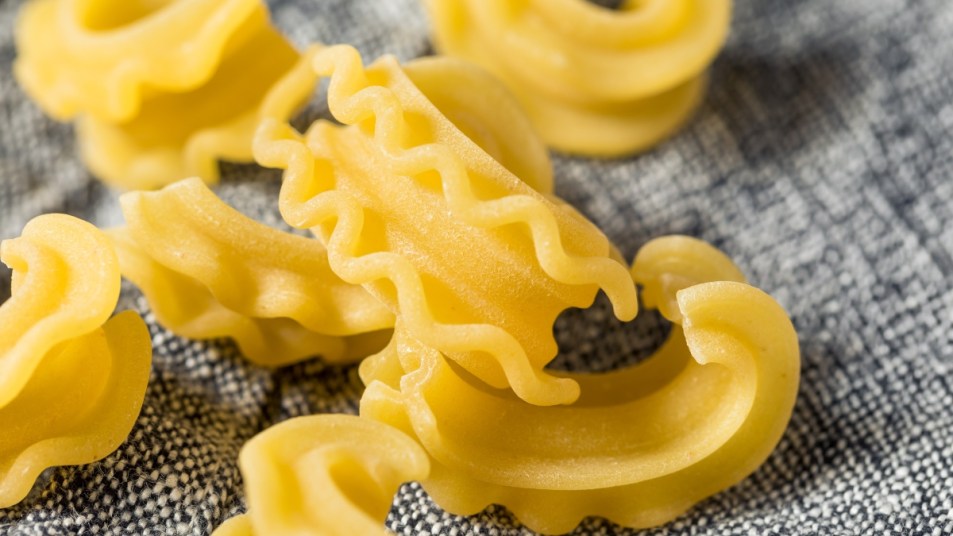
Pasta is my favorite comfort food. Whether it’s a steaming plate of spaghetti bolognese, a warm bowl of macaroni and cheese, or a late-night serving of leftover fettuccine Alfredo, I take pleasure in the familiarity of pasta. So, too, does Dan Pashman, a food journalist for whom a persistent pasta question lingers: Which pasta shape is the pinnacle of pasta perfection?
For some, it’s spaghetti — because twirling it around your fork is fun. For others, it’s rotini — because the short corkscrews hold more sauce within their coils, giving you the perfect starch-to-sauce ratio. And then there are those for whom all pastas are good pastas, but no single pasta emerges the clear “best pasta shape” winner.
Pashman is in the latter group, which is why he invented a new pasta shape that he says exceeds all others. This begs two questions: 1) What are the requirements for a “good pasta?”; and 2) Does Pashman’s best pasta claim hold up?
Read on for the answer, plus a food-lover’s guide to pasta shapes and the sauces they’re made for.
Why are there so many pasta shapes, anyway?
How many shapes can you think of? I could think of about 15 off the top of my head. After my second cup of coffee, I thought of a few more. But according to Italy Magazine, there are over 350 different types of pasta shapes, and even more names for them, since names vary regionally. There are three categories of shapes — short, long, and shapes for soup — and each category can be divided into further subcategories based on texture and other factors.
Chef Matthew Robinson says one reason there are so many shapes is because each interacts with sauce differently. For example, hollow and ridged shapes like penne are ideal for chunky, hearty sauces because they’re good at “grabbing on” to the dish’s other elements (like meat and vegetables); smoother, string-type shapes like spaghetti work best in cream-based and pureed sauces because their their strands — when you twirl them around your fork —retain thin sauces between them; and where larger shapes might overwhelm a light sauce, small shapes disappear in a heavier one. The wide variety of combinations and needs has bred innovation.
Are there any new pasta shapes being invented?
With all those different shapes, wouldn’t “the perfect one” already exist? Not necessarily. At least not in Dan Pashman’s opinion. Pashman is a food journalist and the creator of The Sporkful, a podcast “for eaters” (versus foodies), according to its tagline. Pashman’s goal is “to obsess about food to learn more about people.”
And he does just that, interviewing chefs, celebrities, and everyday people who care about food. He’s spoken with New York firefighter AJ Fusco about putting his culinary background to use as a firehouse chef; “Real Housewife of Potomac” Wendy Osufo about her relationship with cooking; and a New Jersey couple about tracking down the origins of a mysterious, oddly-labeled whiskey bottle they had purchased at a yard sale. (Pashman actually helped to identify the bottle.) In one of his most entertaining podcast episodes, he joined a group of octogenarians in Palm Desert, California, for Shabbat dinner at their local Wendy’s. (The group had gained notoriety for hosting this weekly religious gathering at the fast food chain.)
Suffice it to say, Pashman is fascinated by the way food impacts people. This fascination turned to an obsession after a forum he held in June 2018 called “The Bucatini Dialogues: A Debate about Pasta Shapes.” At the forum, he expressed strong opinions about why spaghetti is the worst pasta shape, which was, of course, met with heavy opposition. (FYI: There is strong language in the recording — pasta makes people passionate.)
That passion launched a years-long project wherein the aim was to create the perfect pasta shape. Pashman traveled the globe, meeting with chefs, wheat cultivators, pasta production companies, and other pasta experts, to make his dream pasta shape a reality. You can listen to his journey in a series called “Mission ImPASTAble.”
So what is “the perfect pasta shape?”
According to Pashman, the answer to the above question is cascatelli. This is the shape that he researched, designed, and created to surpass the quality of all other pastas based on three criteria:
- Saucability: How well sauce can adhere to the pasta shape. Does the shape “grab on” to the sauce, or do sauces slide off of it?
- Forkability: How easy it is to eat the pasta shape with a fork. Does it break upon stabbing? Is it unwieldy? Too small? Too big?
- Toothsinkability: How satisfying it is to bite into the pasta shape. Does its thickness allow for a perfect al dente treatment? Does it get mushy too quickly? Is it too thin? Does it have a good mouthfeel?
It took Pashman three years of work to invent cascatelli, which gets its name from the Italian word for “little waterfalls.” Cascatelli is a small, curved pasta with a ridge in the middle and ruffles on the edges. Initially, it was sold only online, and only by Sfoglini (Buy from Sfoglini, $32.94 for pack of 6 boxes), the company with whom Pashman partnered to produce it. Today, it’s sold in multiple stores, too, and famous names like Trader Joe’s have begun manufacturing it as well. Cascatelli was even named Time Magazine’s 100 Best Inventions of 2021.
Are there other perfect shapes?
Yes, and they’re new. In a podcast episode from January this year, Pashman admits that the success of cascatelli has only fueled his obsession with “obscure pasta shapes.” He got in the habit of ordering old, less well-known shapes from the Internet and seeing if he could perfect and produce them. He explains that nobody “owns” these shapes, so they’re ripe for improvement and re-induction onto our pantry shelves.
He tried found that shapes like cestini — “little baskets” in Italian — had high saucability, but too low of a toothsinkability rating. Torchio pasta — shaped like torches — is difficult to cook right due to its varying thicknesses. But he eventually found two almost perfect shapes that he revised and released earlier this year:
Vesuvio: Named for Mount Vesuvius — the infamous volcano responsible for the Pompeii disaster. It has round tubes stacked on each other, like a soft serve ice cream cone, with an opening on top. Pashman’s iteration is more compact, because this helps the shape satisfy all three criteria. Also, it’s just plain fun. You can find Vesuvio online (Buy from Sfoglini, $32.94 for pack of 6 boxes).
Quattrotini: Based on a shape Pashman found in a pasta manufacturing catalog with no real name; it was simply called “shape 163.” He then learned its official name is “Cinque Buchi,” and it was a Sicilian shape often served during the carnival season that precedes Lent. It’s a small, square tube with four mini tubes on its exterior. Pashman added ridges (to increase saucability) and lengthened the shape for forkability and toothsinkability purposes. You can find Quattrotini online (Buy from Sfoglini, $32.94 for pack of 6 boxes).
Learn more about Dan Pashman, Mission ImPASTAble, and other food adventures on award-winning podcast The Sporkful. A new episode releases every Monday, and they’re available for free on the official website, Apple Podcasts, Spotify, and more.


